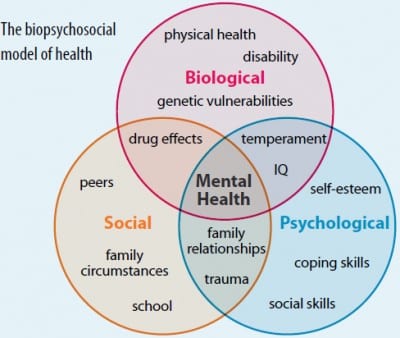Pain and the intensity of pain, as in chronic pain, can have a negative impact on how we function both personally and socially. It can cause frustration and lack of focus and lead to mental exhaustion, depression, and sleep disorders.
Understanding the how’s and why’s of your pain is essential in receiving the best treatment. Is it just physical, or does it go deeper?
George Engel first formulated the Biopsychosocial pain model in 1977, which suggested that understanding an individual’s medical condition is a consideration of the biological, psychological and social factors. Resource: Biopsychosocial Model
Conventionally, the idea of pain and chronic pain relied on the relationship between the organic symptoms and what the patient reported. The range of pain was expected to correspond with the amount of tissue damage “causing” the pain. Psychological factors were presumed to be primary contributors to pain only in those cases where no identifiable pathology was present, and the pain could be labelled as “psychogenic.”
Resource: National Library of Medicine
One of the biopsychosocial model’s strengths is its flexibility.
This model reviews the ‘whole person,’ considering the mind and body as interconnected. The emphasis is on illness and how you live with or respond to symptoms of a disease.
The biopsychosocial model of pain, and treatment of chronic pain, must be multifaceted. The primary treatment goal is to relieve physical pain, increase movement, and improve overall functionality; however, this model also accounts for potential barriers to recovery.
Interdisciplinary care may include primary care, physical therapy, occupational therapy, psychiatric care and case management. Treatment should be tailored to the individual based on their physical, psychological, and social needs.
Often, the last symptom we experience when our body is not working is pain. For a prolonged, active, healthy lifestyle, it is essential to keep joints functioning optimally. Much like regular eye and dental exams, chiropractic care can assess the joints of the body and restore or improve motion before it becomes painful and limits your daily activities.
Dr. Natasha Hayden is a pediatric and prenatal chiropractor that is passionate about helping her community discover just how good their bodies are designed to feel, so they can do more of what they love.
Your health goals are within reach with the support of our team.


